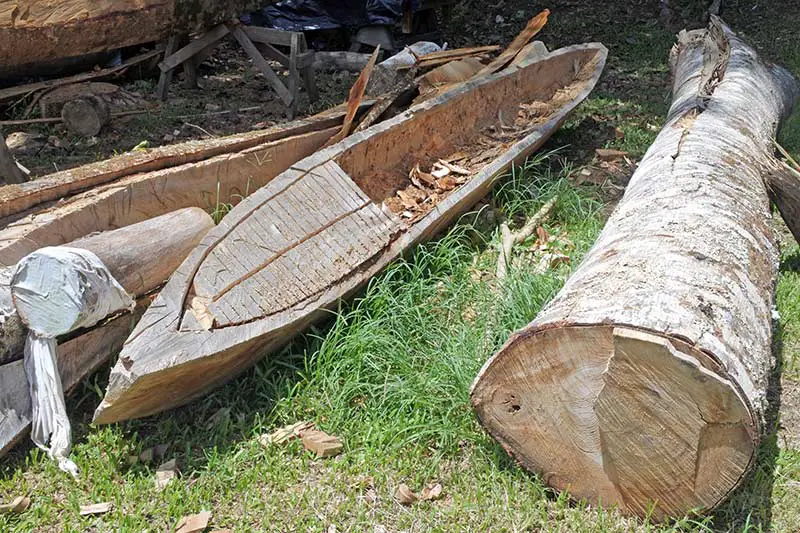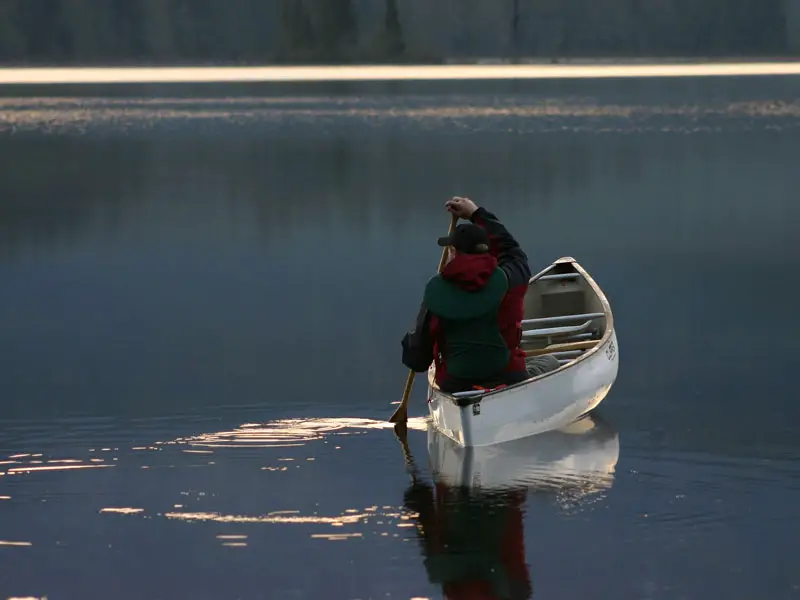Sigurd Olson said, “The way of the canoe is the way of the wilderness and of a freedom almost forgotten.” The freedom of exploring nature in a low-profile vessel has been familiar to paddlers in many cultures for thousands of years, dating as far back as the Stone Age. Narrow and shaped to cut efficiently through the water, the earliest boats were likely some form of the canoe you recognize today. They’ve been around for so long and appear in so many ancient civilizations across the world that it takes diligent searching to try to narrow down who deserves credit for the invention of the canoe.
Tracking Down the First Canoe Builders
Because the canoe has been around for millennia, well before recorded history, it’s impossible to narrow down the first inventor of the canoe or its cousin, the kayak. Pieces of ancient history surrounding the development of canoes have been found all over North America, the Polynesian region, equatorial jungles, and Europe. When a new record-setting ancient canoe artifact is found, we’re one step closer to finding out where and by whom the first canoes were made.
In a search to discover just who invented the canoe, where, and how, I found an article about a canoe discovered by a passerby off the coast of Old Tampa Bay in Florida in 2001. Ten years later, the 1,100-year-old canoe was fully excavated. Closer inspection revealed it had been dug out of pine centuries ago and was one of the longest canoes ever found in the state at over twelve meters (nearly 40 feet) in length. This canoe was also unique in that it was found in a saltwater environment, rather than in a river or freshwater lake like other similar finds. Archaeologists believe the canoe was made by members of the Manasota, a prehistoric Native American people of the Tampa Bay area. I wondered if it was possible this culture group was who invented the canoe as we know it.
The Oldest Canoe Ever Discovered – The Pesse Canoe
Upon further research, I found a much older option that made the Manasota canoe seem like cutting-edge technology. It’s possible that the group who invented the canoe was from the northwestern coasts of Europe. A dugout canoe found in the village of Pesse in the Netherlands in 1955 is the oldest known boat archaeologists have found. Its materials dated back about ten thousand years. The Stone Age era canoe was so ancient that scientists were unsure that it had actually been a boat, so they created a replica according to its dimensions to be sure that it would actually float. The canoe was dug out with a sharp tool from a Scotch pine log. It has been housed at Drents Museum in the Netherlands, where thousands of visitors have been able to observe this ancient example of water travel.
Prehistoric Design and Function
After humans began making and using advanced tools, such as chisels and axes, they began making the first canoes. Sharp rocks and metal were used to dig out tree trunks. Once progress had begun, the ancient canoe makers would sometimes use fire to hollow out the core more quickly.

The earliest prehistoric canoes that have been discovered are carved or dug from logs and designed to carry one or two people at a time. It’s thought that they were used for hunting as well as for transporting supplies. Later canoes were found to be made from tree bark, peeled and sewn or pasted back together in the hydrodynamic shape we’re familiar with today. Prehistoric North American canoes were light-duty, ideal for inland lakes and streams and easily steered with one or two paddles. They would have been light enough for paddlers to carry back on land.
Canoes for Ocean Voyages
Ancient outrigger canoes found on Polynesian islands were larger and built to endure rough oceanic conditions. Pieces of a complex canoe (made of separate attached sections) with decorative carvings fit with other discoveries of canoes built by ancient cultures for voyaging between the many islands of that region. They were so durable that the people who invented the canoe typical of the area were able to travel from East Polynesia all the way to New Zealand. This would be quite an achievement, even by today’s standards.
Evidence of the canoe’s contribution to the earliest colonies and sea trade can be found throughout the Mediterranean. Some islands hold evidence of trade in prehistoric valuables like obsidian, which would not have been native to the islands and which would have had to have been brought by humans some type of boat. Some islands were settled before even ancient Egypt or Greece, their inhabitants arriving via canoe thousands of years before the more famous ancient civilizations were established.
Modern Canoe Materials
As primitive technology advanced, canoes began to be made similarly to skin boats. They would carve a frame from wood and wrap it in canvas or seal it with a simple form of caulk. In the nineteenth century, wood-and-canvas canoes overtook birch bark designs in popularity in the rapidly populating United States. Later, in the early twentieth century, some wartime canoes were made from strong aluminum. Today, many modern canoes are made from plastics, carbon fiber, or fiberglass. They are lighter and stronger than anything our ancestors could have imagined.

Floating a Concrete Canoe
Canoe designers are usually looking to make their craft lighter, faster, and longer-lasting. In some cases, such as an annual engineering competition challenging college students to build a canoe made out of… concrete. The material is brittle and resistant to floating even in the best conditions. I imagine our ancestors who invented the canoe would be completely baffled watching some of the brightest minds in the country try to make a usable canoe out of rock.
Canoes: From Then to Now
Canoes helped the most ancient cultures to survive. They allowed humans access to better fishing and helped them transport crucial supplies where they were most needed. Canoes were instrumental in facilitating the exchange of goods and ideas among cultures who were separated by miles of water. Today, canoes allow us to escape the noise and pace of modern civilization and bring us to the peace and freedom that has always been available to humans only in nature. Canoes keep the “almost forgotten” freedom Olson described within our grasp, no matter how far technology and civilization advance from our roots. They connect us through thousands of years of history to the mysterious, unidentified designers of the first canoe.

Conclusion: Who Invented The Canoe?
It seems that prehistoric people developed canoes independent of each other, and as such, there is probably no singular inventor of the canoe. The Netherlands may yet lose its title of the oldest canoe in the world to a yet undiscovered contender, and another chapter will be opened in the history of canoes.
Until then, here is a great video from The Northmen Guild, hand carving a dugout canoe. Its well worth a watch if you have the time.

